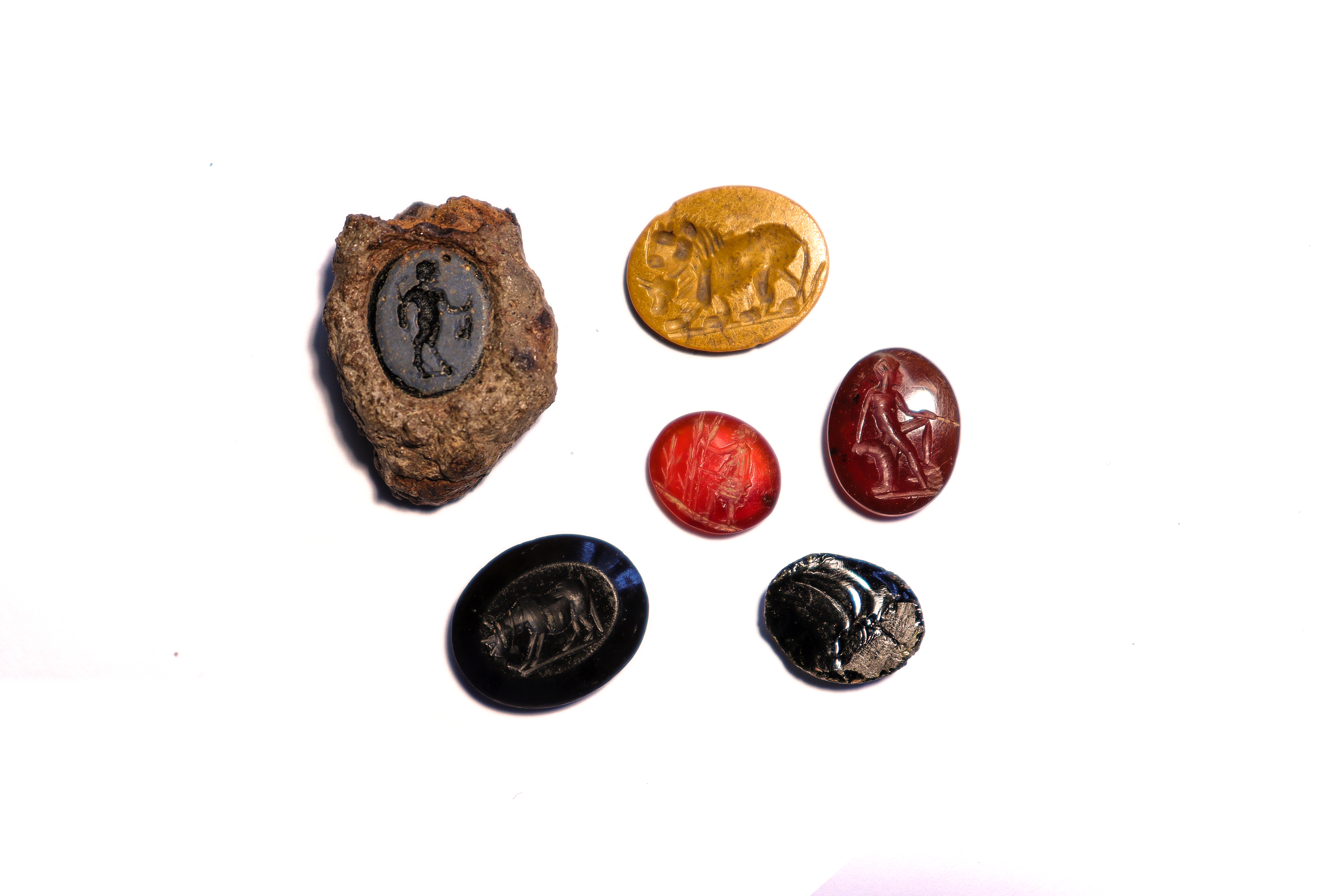Roman Gemstones
Description
These gemstones were found during excavations of the Roman bathhouse in Ribchester, Lancashire. The incised stones known as intaglios were originally set into rings before they were lost in the bathhouse drains almost 2000 years ago. They were made from a variety of precious materials including carnelian, onyx and yellow jasper.
They were incised with different motifs which included a lion with bull's head and a depiction of the seated god Mercury. An intaglio with an incised Capricorn was also discovered at the bathhouse. The Capricorn was Augustus the first Roman emperor's birth-sign and a popular symbol in the Roman Empire.
The bathhouse was built in Ribchester around AD100 during the early years of Roman occupation in Lancashire. It was built for the soldiers stationed at the fort which housed an auxiliary cavalry unit of 500 men from around AD72. Although it was built for the military, the bathhouse was also used by the civilian population included women and children. Finds at the site have included small finger rings, beads and women's hairpins.
Bathing was an important part of Roman life. It was a communal activity that was so central to Roman society that bathhouses were built across the Roman Empire. The use of the bathhouse by the civilian population is an indicator of the early romanisation of the people of Lancashire, during the early years after the invasion.
On display
Clitheroe Castle Museum 2 October2024 - 31 May 2025. Search www.lancashire.gov.uk for Clitheroe Castle opening times.

